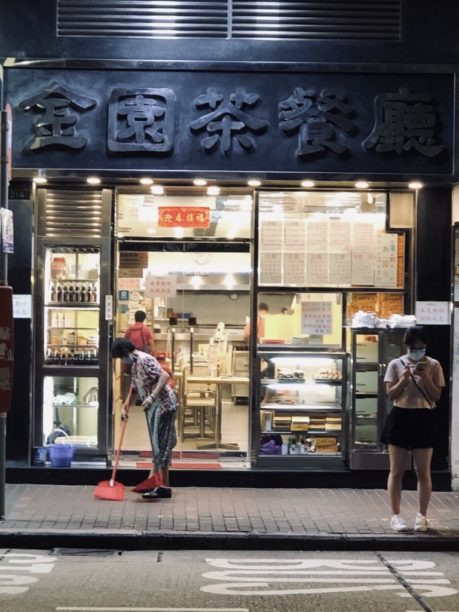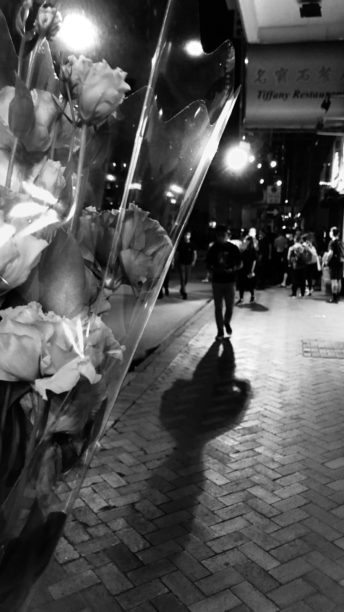Hong Kong
August 31, 2020
My temperature was measured as I pushed through the door to the shopping mall. I was holding three white flowers—the kind I insert into the narrow vases on my grandpa’s grave in the government-owned cemetery at Ching Ming Festival. I bought a copy of Apple Daily, a pro-democracy tabloid whose publisher had been arrested for breaching the new National Security Law.
“Ng goi sai (thank you),” I told the cashier in Cantonese—my mother tongue—and forced a smile. My mask hid it anyway. In my little cousin’s Chinese class here in Hong Kong, Cantonese has been replaced by Mandarin as the language of instruction. On her ID card, her parents had chosen to transliterate her Chinese name into Pinyin instead of Cantonese Romanization. We still communicate in Cantonese in everyday life but she doesn’t know how to read more sophisticated literature in Cantonese, which would convey the rhyming and rhythm better. I wonder if she could recite the Tang Dynasty poem “Ching Ming” in Cantonese like I did at seven, a language much closer to the original than Mandarin. Will she call Hong Kong “Xianggang” one day? Will she identify as a Hongkonger?
 photo: Lin Chai-fei 念齊飛
photo: Lin Chai-fei 念齊飛At the entrance of a cha chaan teng on Boundary Street, leftover pineapple buns and coconut tarts waited to be taken away on a cracked display shelf. I bought one of each for tomorrow’s breakfast.
A hundred years ago, I thought, to my left would have been China, and to my right the British colony of Hong Kong. Now the boundary of the city is increasingly difficult to delineate. “One Country, then Two Systems,” they said. Was I getting lost, or were they?
I came upon a patch of dried soil where autumn leaves rustled—the grave of an old tree that likely was destroyed in last week’s typhoon, the first and last one of our scorching summer. A purple concrete structure stood in the distance; I jaywalked around the roundabout toward the familiar red sign bearing the logo of MTR, the subway company.
 photo: Lin Chai-fei 念齊飛
photo: Lin Chai-fei 念齊飛The bright purple of the Prince Edward subway station exit appeared gray in the dim streetlight, bringing back suffocating memories of the police attack on random passengers in the station on this very day, 31st August, last year. They were beaten to unconsciousness, but all we could do was watch it unfold in livestreams on phone and computer screens. Collective trauma has since shadowed our city. I felt as if the staircase to Hell was right before me and clenched the cold metal rail.
Then I noticed the cluster of white flowers in front of the station exit, and the squads of riot police surrounding it. I knelt beside the purple wall, and put down my three white flowers. Nothing around me changed after I put them down, just like democracy did not arrive after millions of Hongkongers marched again and again. Still, we have put down white flowers on the last day of every month since last August.
Afterwards, I had steamed fish with my father in a “yellow” (pro-democracy) cha chaan teng, whose cashier is decorated with a Totoro-themed Umbrella Movement poster. On the bus ride home, I read on Telegram that a young boy was arrested for putting down white flowers, and had yet another sleepless night.
 photo courtesy of the author
photo courtesy of the author





